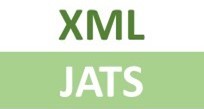Cientifica, ISSN 2594-2921, vol. 28, no. 2, July-December 2024.
DOI: 10.46842/ipn.cien.v28n2a09
Caracterización mecánica de defectos en las Unidades de Líneas de Acero (ULA) operativas en pozos petroleros
Mechanical characterization of defects in slickline units (LSUs) operating in oil wells
Recibido 07-11-2024, aceptado 20-12-2024.
Resumen
Las actividades en pozos petroleros se ven afectadas con fallos catastróficos desencadenados por el deterioro en las líneas de acero en diferentes operaciones mecánicas, inspeccionarías y de rastreo. Es por ello que en este trabajo se prueban diferentes tipos de daños en las líneas de acero (con profundidades de 0.5, 1 y 1.5 mm y anchuras de 1, 4 y 6.5 mm, además de perforaciones circulares de 2.5 mm de diámetro a las mismas profundidades) las cuales serán sometidas a cargas de tensión controladas, con el propósito de caracterizar las respuestas mecánicas de estas estructuras bajo condiciones operativas en pozo. Se realizaron ensayos de tensión para evaluar la resistencia y el comportamiento de las líneas de acero en condiciones de esfuerzo tensil. Estos ensayos permiten determinar los límites de elasticidad, la resistencia máxima y alargamiento máximo, que son indicadores cruciales para entender el rendimiento estructural de los materiales. El objetivo principal de caracterizar defectos en una Unidad de Línea de Acero (ULA) es desarrollar un sistema eficiente para la detección de anomalías durante la operación de estas por medio de un sensor. Los hallazgos revelan que los defectos más profundos y anchos funcionan como amplificadores de estrés, comprometiendo enormemente la resistencia estructural de la ULA. Las muestras sin defectos alcanzaron tensiones máximas de 2,317 MPa, mientras que las que presentaban defectos severos exhiben valores inferiores a 1,800 MPa. Realizar un análisis detallado de la pérdida de material y evaluar la resistencia estructural de las líneas apoya en la determinación de la aptitud de la unidad para ejecutar maniobras seguras y efectivas en pozos de hidrocarburos.
Abstract
Oil well activities are affected with catastrophic failures triggered by the deterioration of slickline in different mechanical, inspection and tracing operations. That is why in this work different types of steel line damage (with depths of 0.5, 1 and 1.5 mm and widths of 1, 4 and 6.5 mm, in addition to circular perforations of 2.5 mm diameter at the same depths) are tested and subjected to controlled tensile loads, with the purpose of characterizing the mechanical responses of these structures under downhole operating conditions. Tensile tests were performed to evaluate the strength and behavior of the steel lines under tensile stress conditions. These tests allow the determination of yield strength, ultimate strength and maximum elongation, which are crucial indicators to understand the structural performance of the materials. The main objective of characterizing defects in a Steel Line Unit (SLU) is to develop an efficient system for the detection of anomalies during operation by means of a sensor. The findings reveal that deeper and wider defects function as stress amplifiers, greatly compromising the structural strength of the ALU. Samples without defects reached maximum stresses of 2,317 MPa, while those with severe defects exhibit values below 1,800 MPa. Performing a detailed analysis of material loss and evaluating the structural strength of the lines supports the determination of the unit's suitability to perform safe and effective maneuvers in hydrocarbon wells.
Palabras clave: pozos petroleros, concentrador de esfuerzos,
pruebas de tensión, caracterización de daños, ULA, SAF 2205.
Index terms: oil wells, stress concentrator, stress tests,
damage characterization, ULA, SAF 2205.
ISO 690 reference:
Arellano Pastrana, Mauricio;
Bermúdez Vilchiz, Jesús;
Albiter Hernández, Apolinar;
Castellanos Escamilla, Víctor Augusto;
Martínez Merlín, Iván Enrique,
2024,
Caracterización mecánica de defectos en las Unidades de Líneas de Acero (ULA) operativas en pozos petroleros,
Científica, vol. 28, no. 2,
ISSN 2594-2921, e280209,
DOI: 10.46842/ipn.cien.v28n2a09





